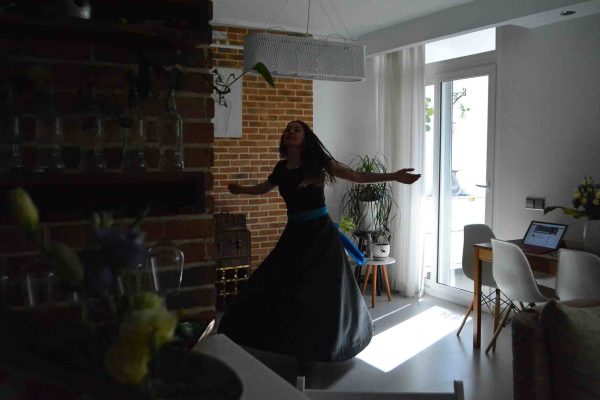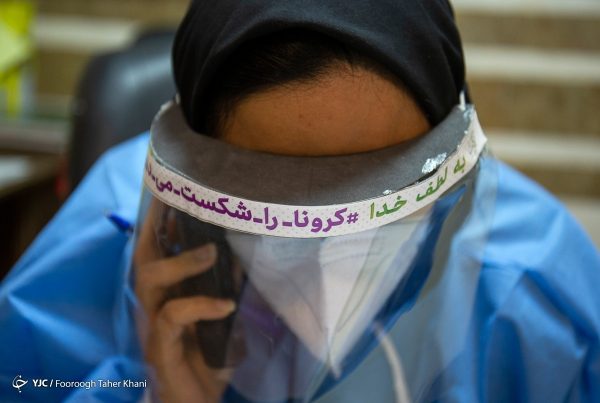“Taraneh, an old friend of mine, asked me to photograph a documentary series of her Sama dancing,” says Tehran-based photographer Sarvenaz Rafieepour. She says her friend, a 36-year-old architect, has found solace in repetitive spinning of her body, losing herself little-by-little in a Sufi dance whose history goes back to centuries ago. “I always thought one should have certain thoughts and beliefs to be able to do Sama,” she quotes Taraneh as saying. “But after being introduced to it, I realized that it’s not some strange, especial activity. It can be done by anyone with any notion or belief. It’s like meditation. Everyone is able to possess that feeling of freedom, liberation and being closer to their higher self.”
Enraptured by the otherworldly ecstasy that is brought about by the continuous whirling of the dance, Taraneh is now eager to share this experience publicly, even though her dancing should remain in her apartment for the time being. “I like to be able to do the Sama dance on the streets one day,” Taraneh says.
سروناز رفیعی پور، عکاس ساکن تهران، میگوید: «ترانه، از دوستان قدیمی من، از من خواست که از سماع کردنش مجموعه مستند عکاسی کنم.» او میگوید دوستش که معمار است و سی و شش سال دارد، حالا تسکین و آرامش را در چرخش مکرر بدن و حذف ذرهذرهی افکار در رقص عارفانهای یافته که قدمت آن به قرون گذشته برمیگردد. او از ترانه نقل قول میکند: «من همیشه فکر میکردم آدم باید تفکر خاصی داشته باشه که بتونه سماع کنه. ولی بعد از آشنایی با سماع دیدم که هر آدمی با هر اعتقاد و باوری میتونه سماع کنه و هیچ چیز عجیب و خاصی نیست. مثل یک مراقبه میمونه و میشه که همه تجربهاش بکنن و بتونن اون حس خوب رهایی و آزادی و نزدیک شدن به درون رو داشته باشن.»
خلسهی ناشی از گردش بیوقفه برای ترانه شعفی به ارمغان آورده که او حالا دوست دارد آن را با عموم قسمت کند. او میگوید: «دوست دارم روزی در خیابانهای شهر سماع کنم.»




